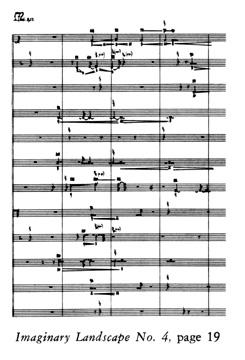User:Inge Hoonte/Machine Part No.6
"I have nothing to say / and I am saying it / and that is poetry / as I needed it" -- John Cage
John Cage started composing complex scores structured around factors of chance, or more accurately, chance-controlled scores, as early as 1951. blablabla
In this composition for 12 radios, 24 performers, and director, two performers each operate a radio whose kilocycle, amplitude, and timbre changes are notated. The score for the performance was conceived using the same methods as those used for the composition «The Music of Changes,» namely the factors of chance adapted from the Chinese «Book of Changes.» According to Cage, this complex and time-consuming compositional process has the following goal:
»It is thus possible to make a musical composition the continuity of which is free of individual taste and memory (psychology) and also of the literature and ›traditions‹ of the art. The sounds enter the time-space centered within themselves, unimpeded by the service to any abstraction, their 360 degrees of cricumference free for an infinite play of interpenetration. Value judgments are not in the nature of this work as regards either composition, performance, or listening. The idea of relation being absent, anything may happen. A ›mistake‹ is beside the point,, for once anything happens it authentically is.«
"The idea of relation being absent, anything may happen. A mistake is beside the point, for once anything happens it authentically is." (John Cage, Silence, 1967, Cambridge Mass. P 59)
Two performers are stationed at each radio, one for dialing the radio-stations, the second performer controlling amplitude and timbre. Durations are written in conventional notation, using notes, placed on a five-line staff. The rhythmic structure of the work is 2-1-3 and is expressed in changing tempi. Cage uses proportional notation where ½ inch equals a quarter note. The notation is not entirely proportional though, since accelerandos and ritardandos are still present in the score. The score gives notations for tuning (controlled by player 1) as well as volume and tone color (controlled by the second player).

